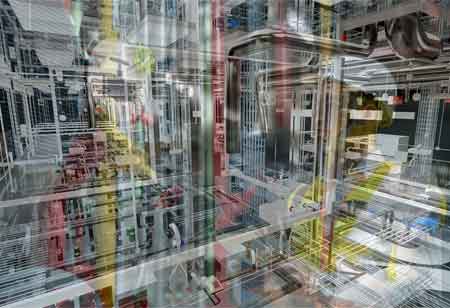Thank you for Subscribing to Construction Business Review Weekly Brief

Building High-Performing MEP Systems for Lasting Impact
MEP projects require thorough planning, BIM, technical expertise, budget alignment, advanced software, risk management, energy-efficient design, digital twins, prefabrication techniques, and adaptability for success, ensuring efficiency and quality.
The complexity inherent in MEP (Mechanical, Electrical, and Plumbing) projects underscores the importance of thorough planning and precise execution. Managing intricate systems, engaging diverse stakeholders, and adhering to stringent deadlines require the implementation of effective project management methodologies.
Laying the Groundwork
Embracing Building Information Modeling (BIM) is paramount in enhancing efficiency and minimizing rework in MEP disciplines. BIM is a centralized repository, establishing a singular source of truth for all relevant data. Leveraging 3D models within BIM facilitates clash detection, coordination, and prefabrication processes, optimizing project workflows. A meticulous approach to detailed scope definition is essential, involving a thorough outline of project objectives, deliverables, and success criteria. This practice mitigates ambiguity and forestalls potential disputes, ensuring a well-defined scope of work for each MEP discipline. Equally critical is assembling the right team, comprising individuals with the requisite technical expertise, experience, and a collaborative mindset. Clearly delineating roles and responsibilities fosters seamless communication and accountability, contributing to the project's overall success.
Master the Schedule and Budget
Ensure seamless integration of schedule and budget by aligning project milestones with budgetary allocations. Employ state-of-the-art project management software with real-time tracking and forecasting capabilities to identify potential deviations and take corrective action promptly. Proactively manage risks by identifying and mitigating potential issues and developing contingency plans to address unforeseen circumstances, minimizing their impact on the schedule and budget. Establish a robust change order management process with standardized approval procedures and thorough cost impact assessments to maintain project integrity and financial control.
Communication
Fostering open and transparent communication within a project framework is imperative for successful collaboration among stakeholders, encompassing designers, contractors, owners, and facility managers. Employing collaborative platforms and communication tools is essential to streamline information sharing and feedback processes. Additionally, ensuring meetings are purposeful involves defining clear agendas and objectives, ensuring the presence and active participation of all relevant parties, and documenting critical decisions and action items for future reference. Leveraging cloud-based collaboration tools further enhances transparency by facilitating document sharing, real-time updates, and centralized information access. This approach transcends physical boundaries, promoting a seamless and efficient collaborative environment for all involved parties.
Sustainability
In pursuing environmentally conscious and economically viable construction practices, the approach to MEP design prioritizes Energy-Efficient Design principles. This involves the seamless integration of renewable energy sources, meticulous equipment selection for optimization, and the incorporation of cutting-edge smart building technologies. Furthermore, commitment to sustainability extends to emphasis on sustainable material selection, where environmentally friendly materials with low embodied carbon are specified and adhere to responsible sourcing practices. To ensure designs' long-term viability and economic efficiency, employ rigorous life-cycle cost analysis methodologies. This involves a comprehensive evaluation of the enduring cost implications associated with design choices, thereby promoting the adoption of sustainable and economically sound solutions.
Latest Trends and Technologies
Incorporating digital twins into project development allows seamless virtual prototyping, testing, and performance optimization. This advanced technology facilitates early identification of potential issues and accurate prediction of system behavior, contributing to enhanced design precision and operational efficiency and, additionally, adopting prefabrication techniques and modularization streamlines on-site installation processes, resulting in minimized construction timelines and heightened quality control measures. Moreover, advocating for data-driven decision-making is imperative in the modern construction landscape. Implementation of analytics tools enables the systematic collection and analysis of project data, empowering stakeholders to make informed decisions, optimize resource allocation, and ultimately enhance overall project performance.
In project management, adaptability emerges as a pivotal attribute. The ability to recalibrate plans and schedules in response to unforeseen circumstances and stakeholder feedback is essential for navigating the dynamic landscape of projects. Additionally, fostering a culture of continuous improvement is paramount. This involves drawing insights from past projects, assimilating best practices, and applying them to enhance future endeavors. By adhering to these principles and harnessing cutting-edge technologies, project managers can establish a collaborative environment conducive to the flourishing of MEP projects. It is crucial to recognize that effective project management extends beyond the confines of meeting deadlines and budgets; it is fundamentally about constructing efficient, sustainable, and high-performing MEP systems that contribute significantly to the overall success of any construction project.
By incorporating established best practices and leveraging the latest advancements, MEP project managers can adeptly navigate the intricacies of their projects with assurance. It is imperative to prioritize successful collaboration by cultivating an environment characterized by open communication, aligned objectives, and mutual respect. Doing so will witness MEP projects achieve unparalleled efficiency, quality, and success.








